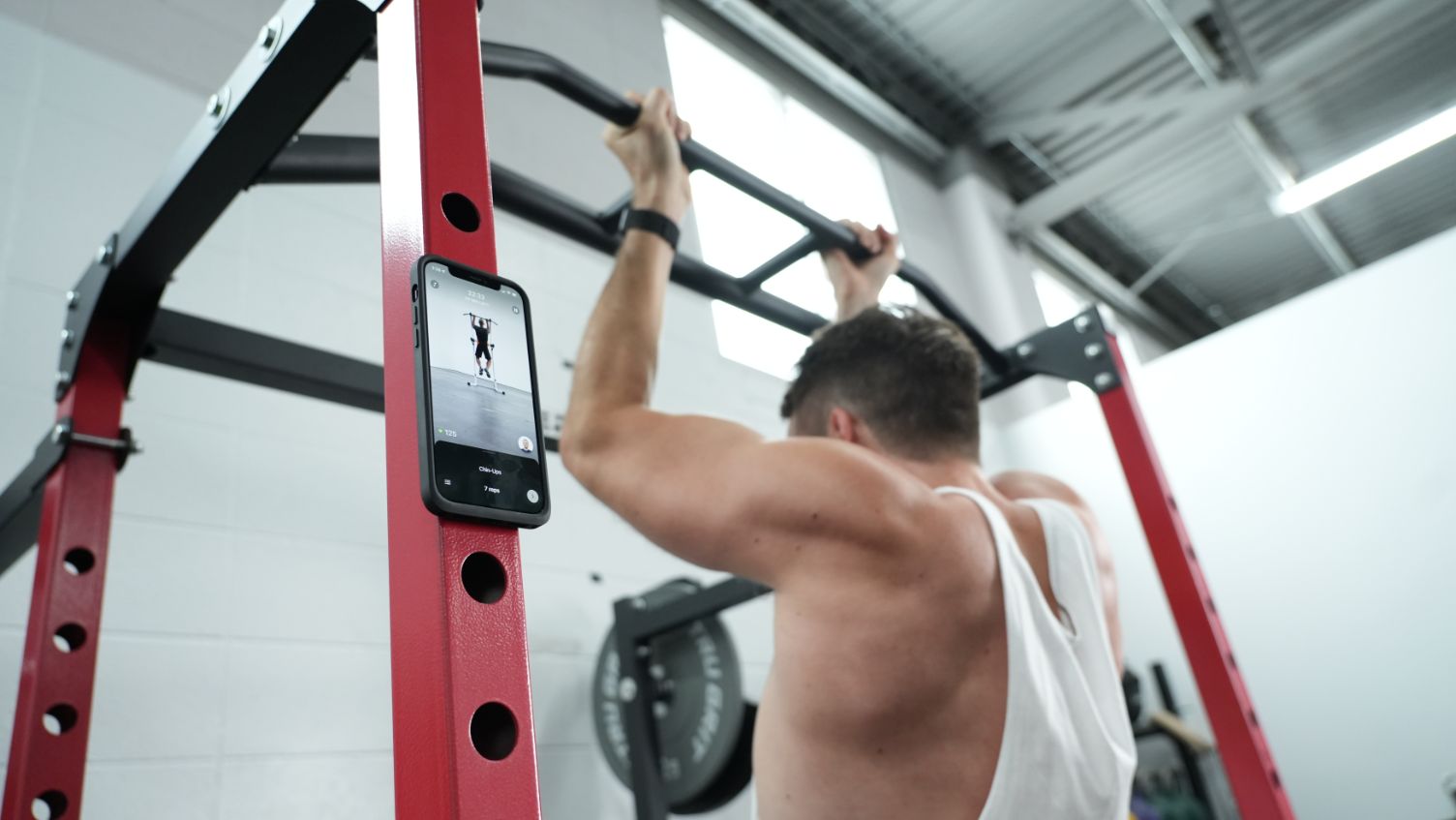We test and review fitness products based on an independent, multi-point methodology. If you use our links to purchase something, we may earn a commission. Read our disclosures.
Remember when you started at the gym for the first time? Don’t worry, this personal trainer will wait. Dollars to donuts, the only exercise you did and knew about was biceps curls. Busting out some biceps curls is a rite of passage for almost all lifters. Although equipping your home gym with the best dumbbells is ideal, don’t sleep on bodyweight exercises for biceps.
Some of the best bicep exercises are bodyweight exercises, which trains your biceps harder and heavier than any bicep curl. The chin-up is the best example. Here we’ll dive into the eight best bodyweight biceps exercises with a routine to perform when you’re looking for variety or you’re unable to get to the gym.
RELATED: Bodyweight Leg Workout
Weight is optional for biceps, but having a mirror to flex in isn’t. Ensure you have a mirror for your home workout to admire your handiwork.
Medical disclaimer: This article is intended for educational and informational purposes only. It is not intended as a substitute for medical advice. For health advice, contact a licensed healthcare provider.
8 Best Bodyweight Bicep Exercises
- Chin-Ups
- Reverse Push-Ups
- Inverted Row
- Towel Biceps Curls
- Plank
- Side Plank
- TRX Suspension Trainer Biceps Curls
- Isometric Biceps Curl
Chin-Ups
Why Do It: Chin-ups require a supinated close grip that not only hits the upper back and lats but also requires the biceps to pull your body weight to the bar. The biceps go through a larger range of motion with the chin-up for improved muscle-building potential. It is a great biceps and back exercise.
RELATED: What Muscles Do Chin-Ups Work?
How to Do It:
- Grip the chin-up or pull-up bar with an underhand grip, palms facing you, and your hands shoulder-width apart.
- Get into the dead hang position and start the chin-up by pulling your shoulder blades down and back.
- Pull your upper chest to the bar using your biceps, lats, and upper back.
- Once you have reached lockout, slowly lower back down to the dead hand position.
- Reset and repeat.
Form Tips: Controlling your eccentric (descent) is healthier on your elbows and gives you more muscle-building tension. If you cannot perform multiple repetitions of the chin-up, using one of the best resistance bands for assistance will help.
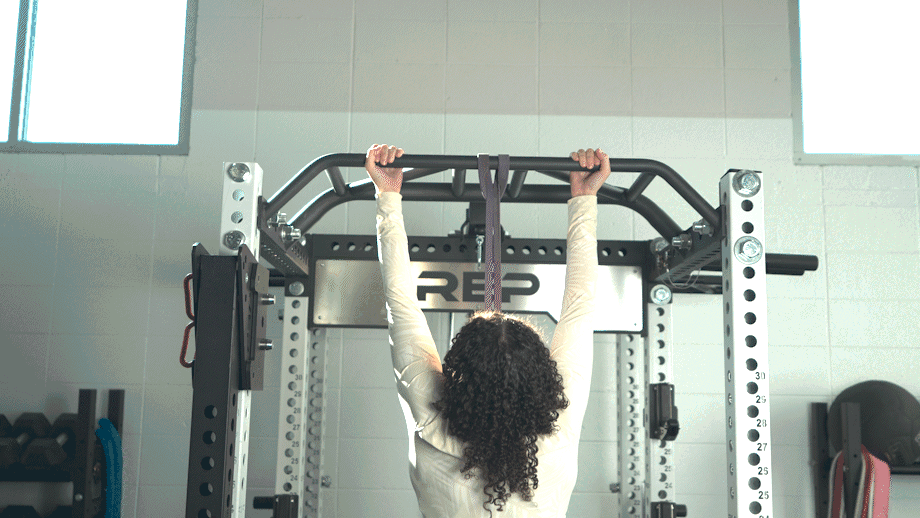
Reverse Push-Ups
Why Do It: Push-ups are a fantastic exercise to build muscle in your upper body, like your triceps and chest. But with a slight adjustment, it trains the biceps, too. Rotating your wrists and forearms until your fingers point backward when your hands are on the floor increases elbow flexion (and biceps activation) with this push-up variation.
RELATED: What Muscles Do Push-Ups Work?
How to Do It:
- Get on your hands and knees and rotate your wrists until your fingers point backward.
- Extend your legs behind you and squeeze your glutes to set your push-up position.
- Lean your torso slightly forward and lower into your push-up.
- When your chest almost touches the floor, your upper arm will be by your torso.
- Extend your elbows until you’re back in the lockout position, reset, and repeat.
Form Tips: This push-up requires good wrist flexibility, so if you feel any discomfort, discontinue and work on your wrist flexibility.
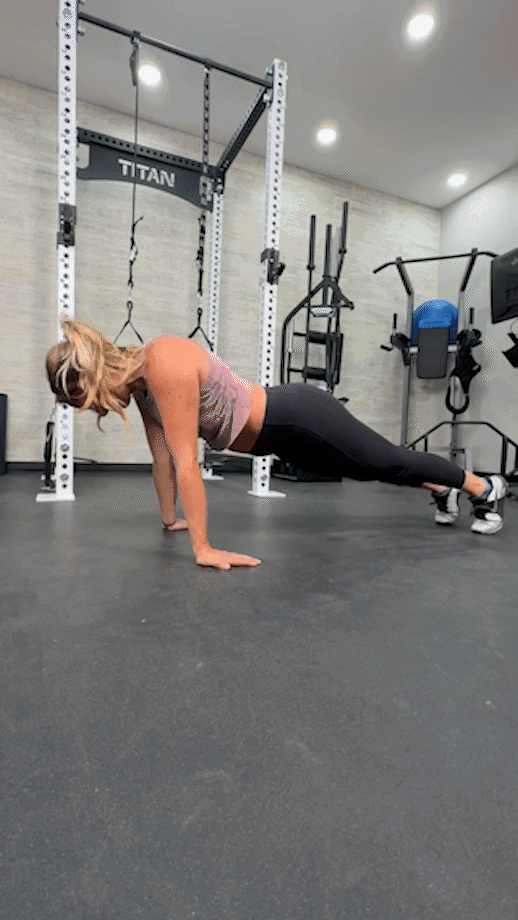
Inverted Row
Why Do It: If you have trouble doing multiple reps of the chin-up, the horizontal angle of the inverted row makes it easier to pull your body weight while still training your biceps hard and heavy.
How to Do It:
- Set a barbell in one of the best squat racks at a height where your body doesn’t hit the floor when your elbows are extended.
- Lay underneath the bar and align it with your lower chest.
- Grip the barbell with your preferred grip, with your hands slightly wider than shoulder-width apart.
- Straighten your legs and lift your glutes to get into position.
- Pull your lower chest toward the bar by bending your arms and bringing your shoulder blades together.
- Slowly lower down to the starting position and reset and repeat.
Form Tips: Gripping the barbell with a supinated (underhanded grip) emphasizes the biceps even more.
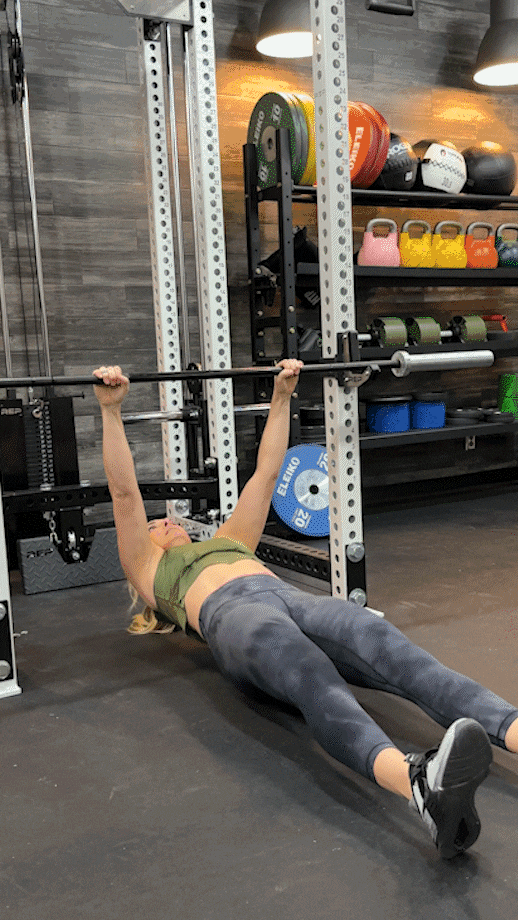
Isometric Towel Bicep Curls
Why Do It: Isometric towel biceps curls allow you to control your curl’s intensity. The harder you pull, the more muscle-building tension you will place on your biceps.
How to Do It:
- Sit on the ground upright, holding a long towel with an overhand grip on each hand.
- Hook the towel evenly over your feet and bend your knees slightly.
- Get a firm grip on each hand, bend your elbows, and pull until you feel a contraction in your biceps.
- Perform for 5 to 10 seconds, then rest and repeat.
Form Tips: Ensure a firm grip so the towel doesn’t slip out of your hands.
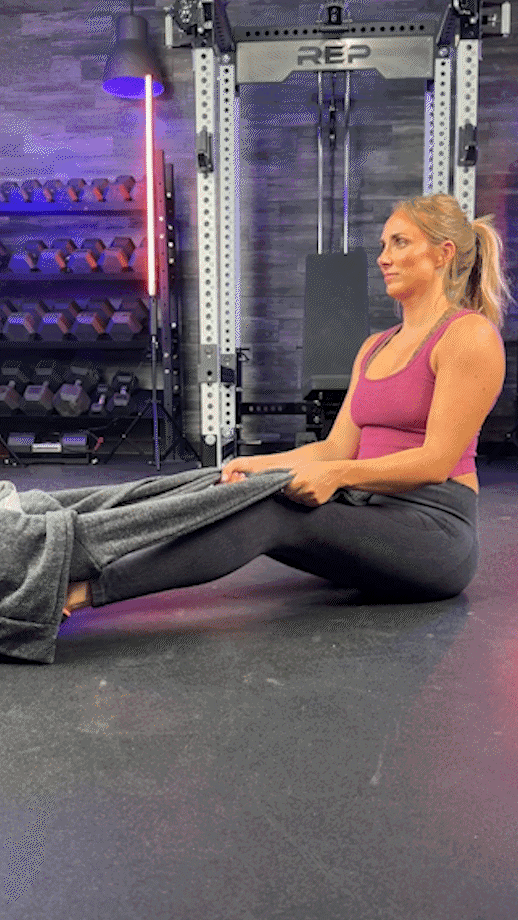
Plank
Why Do It: Plank exercises are great for improving your core stability, but with a slight tweak to your standard plank, you can turn it into an exercise that attacks the biceps. The best of both worlds, right?
How to Do It:
- While lying prone on the ground, place your elbows underneath your shoulders.
- Tuck your toes and push up into an elbow front plank.
- Squeeze your fists and pull your elbows toward your toes to feel a biceps contraction.
- Hold for desired time.
Form Tips: Ensure your elbows are underneath your shoulders and pull your elbows toward your feet while squeezing your fists.
RELATED: Best Exercise Mat
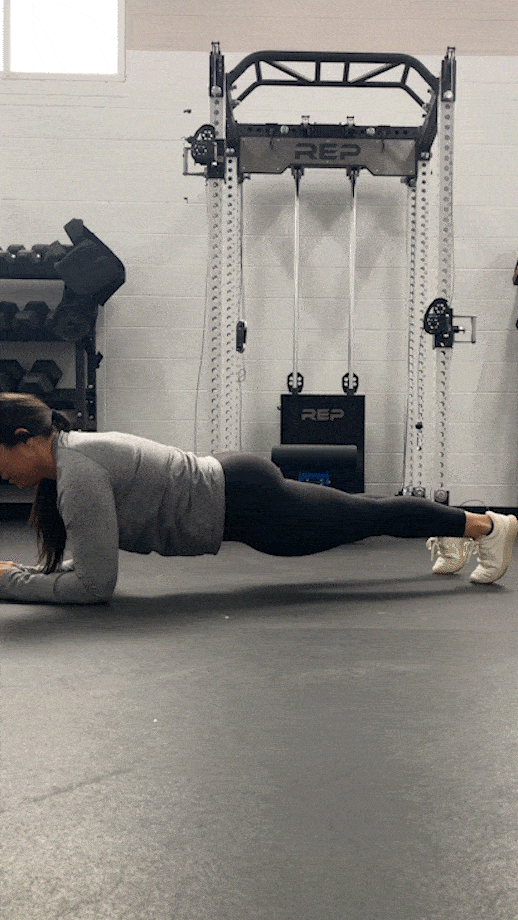
Side Plank
Why Do It: Side planks are not the first exercise you think of when it comes to biceps training, but with a little intention, they can work the biceps. Because your biceps are flexed and support your body weight, actively flexing them while in the side plank works the biceps and strengthens your core at the same time.
RELATED: Best Ab Exercises
How to Do It:
- Lie on your side with your elbow under your shoulder and legs stacked on each other.
- Use your opposite hand to push up into the side plank position.
- Engage your glutes, press your elbow into the ground, and actively flex your biceps.
- Hold for the desired time, then repeat on the other side.
Form Tips: Intention is the key here; focus on flexing those biceps hard.
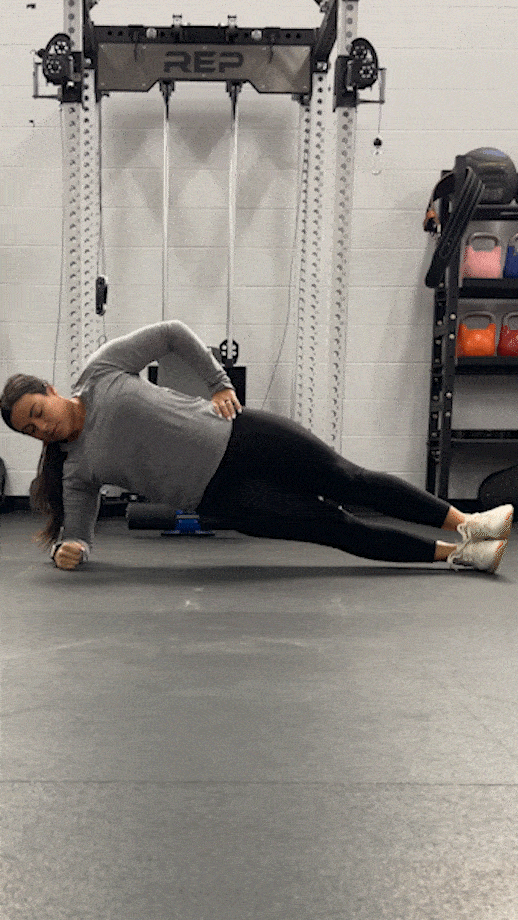
TRX Suspension Trainer Bicep Curls
Why Do It: You’re working your biceps muscles with the TRX biceps curls, but it is a full-body exercise because of all the muscles involved in fighting the instability of the TRX suspension system.
How to Do It:
- Set up the TRX on the mid-length setting and grip the handles with an underhand grip.
- Walk your feet to your desired intensity; closer to the anchor point is harder, and further away is easier.
- Extend your arms back to full extension, squeeze your glutes, and get your shoulders down and chest up to ensure your body is in a straight line.
- Curl the handles toward your temples while keeping your elbows high.
- Lower to the starting position and reset and repeat.
Form Tips: Keeping your elbows at shoulder height is key.
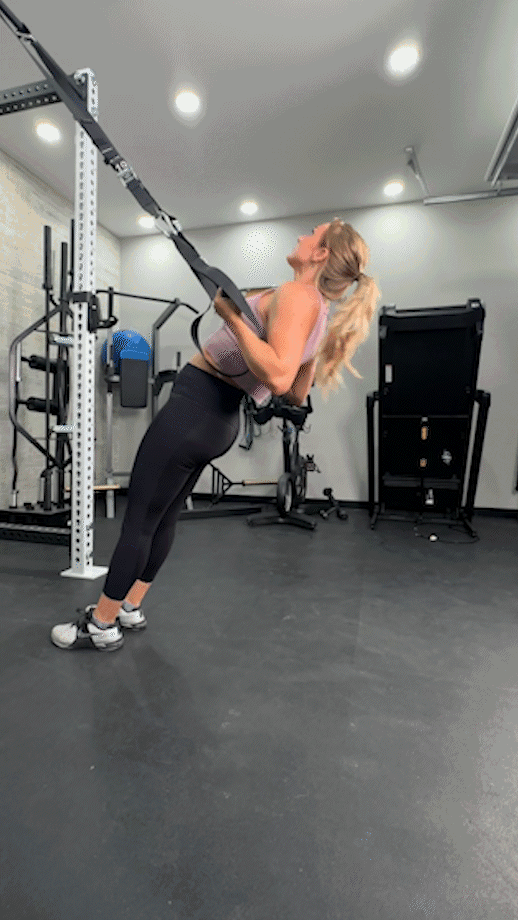
Bodyweight Isometric Biceps Curl
Why Do It: Many exercises here involve equipment, but the isometric biceps curl is all you. You’ll feel your biceps churning and burning by squeezing your hands and focusing on the mind-muscle connection between you and your biceps.
How to Do It:
- Stand upright and keep your upper arms by your side. Bring your elbows to a 90-degree angle.
- Squeeze your hands into a fist and flex your biceps as hard as possible without moving your arms.
- Once you start to lose tension, rest, reset, and repeat.
Form Tips: When you lose maximum tension, stop and rest, and then go again.
RELATED: Wrist Mobility Exercises
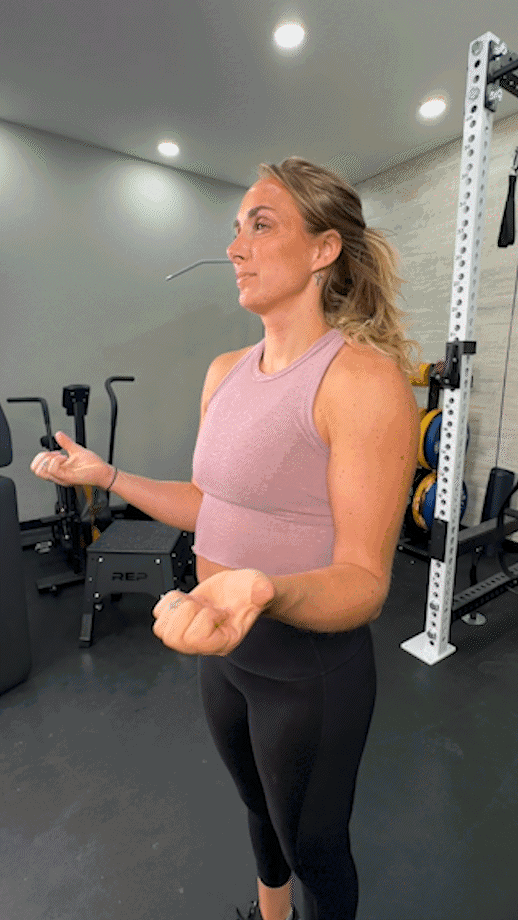
How to Create Your Own Bodyweight Biceps Routine
When equipment is scarce, or you’re looking for some variety for your biceps routine, use the following tips to get the best out of your bodyweight biceps workout routine.
Progression
For bodyweight training, the ultimate form of progressive overload is performing more reps for more time under tension. The longer the biceps are under tension, the better. Another easy form of progression is slowing the eccentric contraction on the chin-up, inverted row, reverse push-up, and TRX biceps curl by slowing the eccentric (lowering) contraction, which is the body’s strongest contraction; you also increase the time under tension.
With the isometric exercises, holding the biceps for more time under tension or doing multiple sets is key.
Variety
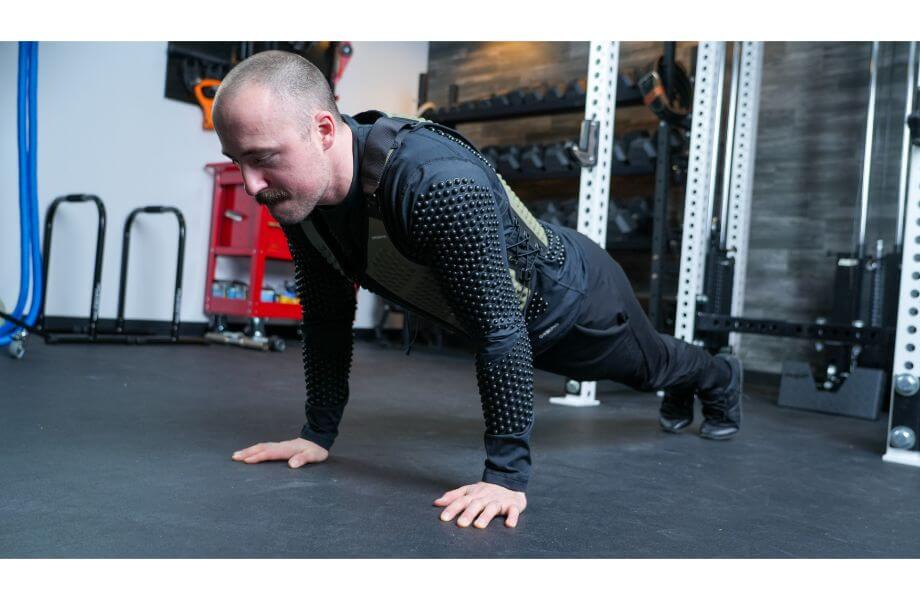
To build the biceps using bodyweight workouts, use a combination of compound exercises, like chin-ups and inverted rows, and isolation exercises, like the standing biceps curl, to ensure better muscular development. Pick two or three exercises on this list, do them for a few weeks, and then choose two or three different ones to keep things fresh.
RELATED: 21s Workout for Biceps
Sets and Reps
Muscle growth and strength are built in various sets and rep ranges. Hypertrophy is achieved by 40 to 70 seconds under tension1 in each set. You can accomplish this with more reps, slower rep speed, pauses, and isometric contractions.
RELATED: Benefits of Strength Training
When training with body weight using normal repetition speed, the ideal rep ranges are in the higher rep ranges, between 10 to 25 reps and between two to four sets. This will give you between 40 to 100 reps, providing plenty of muscle-building time under tension.
Bodyweight Bicep Exercises: Final Thoughts
With many great exercise tools to build muscle and strength, bodyweight and no-equipment exercises for biceps are often neglected. Although biceps are a muscle group best built with weight, using your body weight to develop your biceps is a great change of pace. When you improve your time under tension and mind muscle connection, you can make surprising progress with bodyweight alone.
Ensure you have a mirror handy to admire your results.
Bodyweight Bicep Exercises: Q&A
How can I build my biceps without weights?
Your body doesn’t pick and choose which resistance it is. Resistance is resistance if it’s a barbell or body weight. You can build big biceps without weights if you provide enough time under tension without weights.
Are there bicep bodyweight exercises?
Arguably, the best bodyweight exercise for the biceps is the chin-up. The biceps pull your body weight over the bar with the forearms, upper back, and lats. Try curling your body weight on a barbell, and you’ll see how difficult that is.
How can I build my biceps without weights?
You build bigger biceps with body weight like you build them with weights—you find ways to increase the biceps time under tension to 40 to 70 seconds per set, so you can feel the biceps burn.
Can you get big arms with bodyweight exercises?
Yes, you can get big arms using weightless bicep exercises. But the key here is to use a combination of compound exercises like chin-ups and push-ups and isolation exercises like towel bicep curls for better arm development.
How do you do calisthenics biceps without a bar?
Building biceps without a bar requires some improvisation and is doable. For instance, using a solid stick, like a broom handle, and placing it between two chairs, properly secured, simulates an inverted row.
References
- Burd NA, et al. Muscle time under tension during resistance exercise stimulates differential muscle protein sub-fractional synthetic responses in men. J Physiol. 2012 Jan 15;590(2):351-62. doi 10.1113/jphysiol.2011.221200. Epub 2011 Nov 21. PMID: 22106173; PMCID: PMC3285070.
Further reading

In considering a water rower vs magnetic rower, know that both machines provide a low-impact workout, but have some major differences, too. Read more

Is Creatine HCL 189 more powerful than creatine monohydrate? We’ve created this GNC Amp Creatine HCL 189 review to help you decide. Read more

GGR brings you the Rock’s Leg Workout: delivering chiseled legs with only four movements. Read on and find out how to add it to your training split! Read more

Remember when you started at the gym for the first time? Don’t worry, this personal trainer will wait. Dollars to donuts, the only exercise you did and knew about was biceps curls. Busting out some biceps curls is a rite of passage for almost all lifters. Although equipping your home gym with the best dumbbells is ideal, don’t sleep on bodyweight exercises for biceps.Some of the best bicep exercises are bodyweight exercises, » Read more about: The Best Bodyweight Bicep Exercises You Can Do Anywhere » Read more

